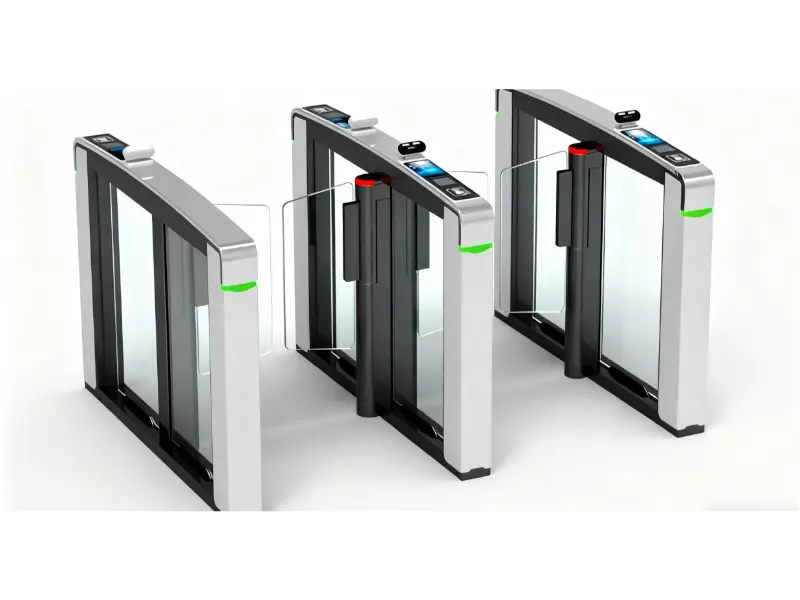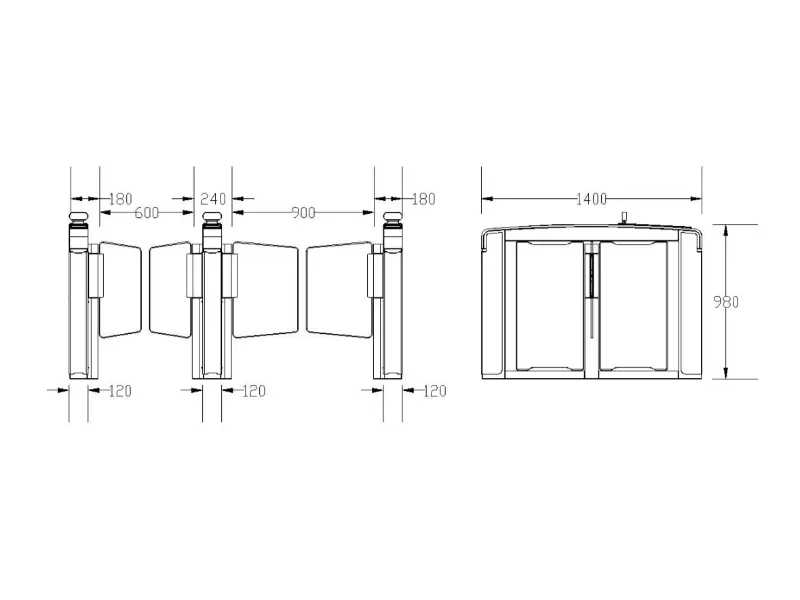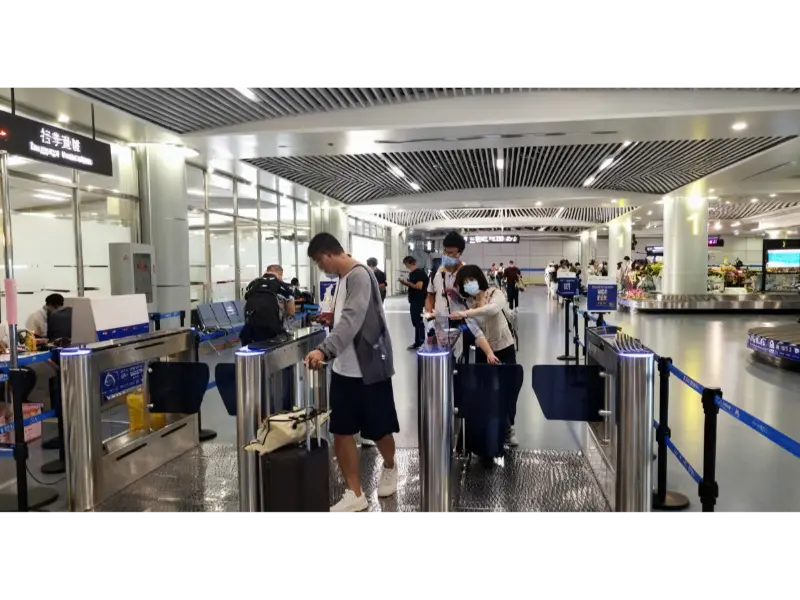Why High-Speed Rail Stations Prefer Swing & Speed Turnstiles?
2025-11-25
Both swing turnstiles and flap turnstiles are common pedestrian access control devices. They are similar in that they are used for pedestrian flow control at entrances and exits, attendance tracking, ticket verification, and visitor management. The main difference lies in the opening method: swing and speed turnstiles control passage through a swinging motion, while flap turnstiles control opening and closing by retracting into the machine box. The biggest difference between the two types of turnstiles is the passage width.

Appearance:
Swing/speed turnstiles offer the greatest aesthetic flexibility of all turnstiles. They offer the widest variety of barrier materials and machine box shapes, facilitating the design of highly sophisticated forms. Therefore, they are frequently used in high-end environments such as office buildings, smart buildings, and clubs. Flap turnstiles have a more limited appearance and are not as versatile as swing/ speed turnstiles.

Passage width:
Swing/speed turnstiles offer the widest passage width of all pedestrian access control systems, typically between 550 mm and 1000 mm. Some customized products can reach up to 1500 mm, allowing passage for non-motorized vehicles and VIP access. Swing turnstiles/speed turnstiles have an intermediate passage width between tripod turnstiles and flap turnstiles, generally between 550 mm and 990 mm. Swing/speed turnstiles are commonly used in high-speed rail stations due to their wider passage width, as most pedestrians carry luggage. In contrast, in subway stations, where fewer pedestrians carry luggage, flap turnstiles are more common, offering faster opening and closing and saving time.

Anti-tailing capability:
Both swing and flap turnstiles have pedestrian detection modules for effective pedestrian detection and offer high anti-tailing capabilities. However, in high-traffic areas, swing turnstiles offer greater anti-tailing capability. In environments such as high-speed rail stations, the balance between safety and efficiency is crucial. While swing tursntiles offer a slight advantage in preventing congestion during peak passenger flow, high-speed rail stations typically have a high proportion of passengers with bulky luggage, families, and people with reduced mobility. Swing turnstiles, with their wide passage width (up to 1000 mm or more), effectively prevent the risk of luggage jams and people bumping into each other, significantly reducing unexpected stops and thus ensuring the rapid dispersal of large crowds. Imagine peak periods, such as the Spring Festival; if luggage gets stuck due to narrow aisles, long queues will form immediately. The resulting loss of efficiency and safety risks far outweigh the slight difference in preventing overcrowding. Therefore, swing turnstiles, with their "space for time" strategy, achieve superior overall efficiency in practical applications.

Usage environment:
Thanks to their high flexibility and diverse designs, swing/speed turnstiles can be adapted to a wide variety of access routes for pedestrians and non-motorized vehicles, thus fitting into different environments, even outdoors.

High-speed trains, as a modern and comfortable mode of transport, require a suitable infrastructure. The smooth opening and closing of swing/speed turnstiles (compared to the rapid opening and closing of conventional flap turnstiles) provides a more pleasant and welcoming psychological experience, reducing any feeling of being overwhelmed. Furthermore, their extra-wide aisles facilitate barrier-free access for wheelchairs, strollers, and prams, reflecting not only a high level of service but also an essential requirement for the inclusive design of public facilities. By installing swing turnstiles, the high-speed rail stations clearly convey a welcoming message to everyone, including passengers with special needs.




